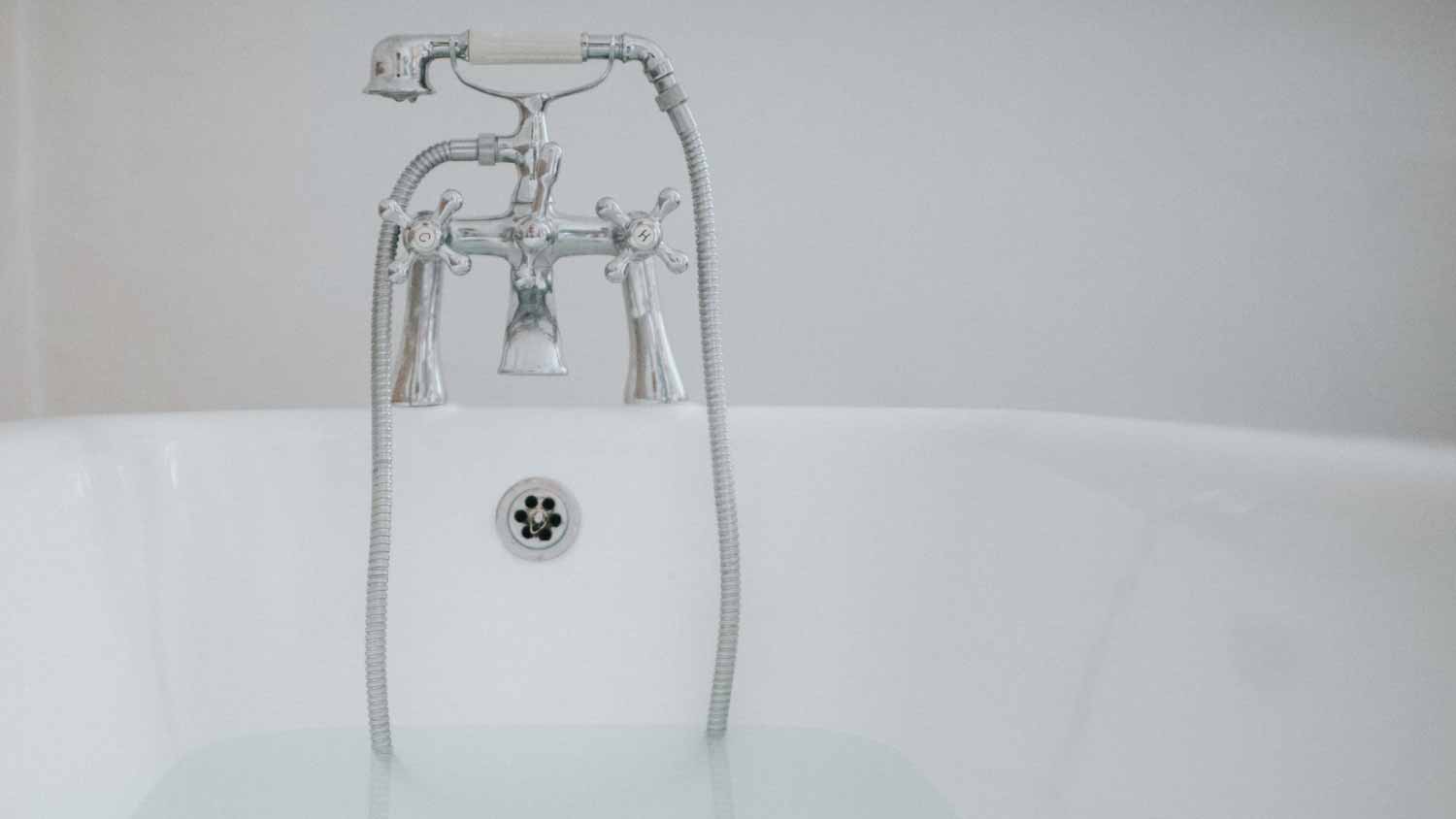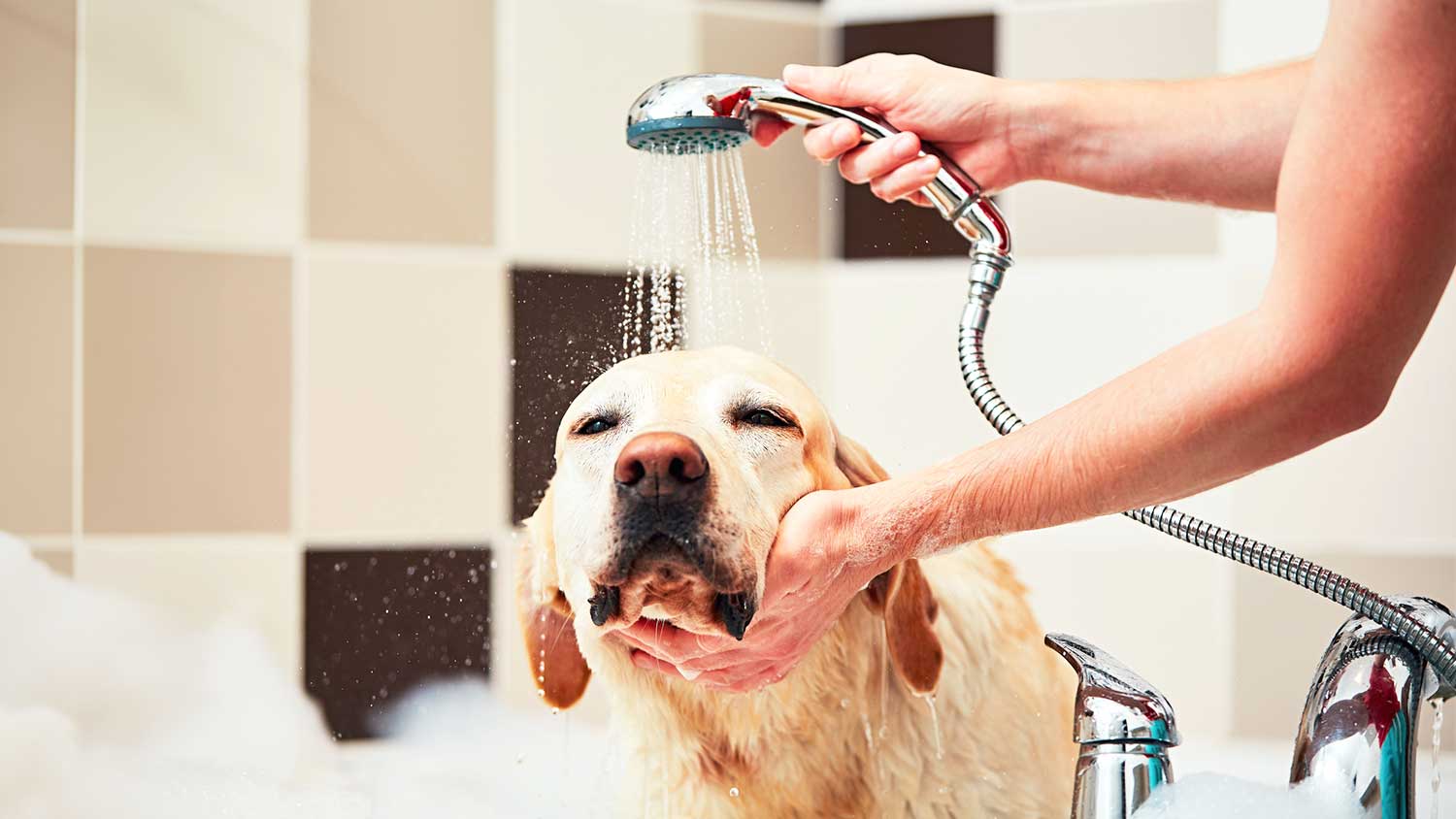
This guide to toilet installation cost covers what you can expect to pay when adding a new toilet to an existing or new bathroom.
This is one flow you don’t want to go with


If your bathtub faucet doesn’t turn off, it could be a damaged faucet handle, faulty O-ring or washer, or malfunctioning valve.
Replacing a faucet handle is a simple DIY job for a handy homeowner.
If you're not comfortable working on plumbing fixtures, call a plumber to replace the valve.
When you turn the water on, you expect to be able to turn it off. Not being able to stop running water in your bathroom isn’t conducive to relaxing bubble baths. We found three reasons why your bathtub faucet won’t turn off along with ways you can fix it. But when in doubt, call a pro to take care of your plumbing mishaps.
When a bathtub faucet won’t turn off, the best place to start troubleshooting is at the handle. It’s possible that the setscrew that holds the handle in place is loose, which won’t allow the faucet to turn the valve off. A cracked, rusted, or corroded faucet handle also won’t be able to shut the water flow valve off, leading to a bathtub faucet that runs continuously.
Before buying a new faucet handle, check to make sure the setscrew is tight. If it is, and you’re still having an issue, you can install a new bathtub faucet handle. If you know which handle you need, you can head to the hardware store and pick one up.
If you’re unsure of which type of handle you need, start by removing the existing handle and take it with you. Follow the manufacturer’s instructions to install the new faucet.
Always turn off the water before starting a plumbing project. Doing so helps protect your home in case of flooding and water damage. You can shut off the water at the faucet or fixture you're working on or turn it off at your home's main shut-off valve.

In some cases, the issue isn’t with the faucet handle but rather the washer or O-ring in the faucet spout. When they’re in good condition, these parts aid in turning the water off and prevent leaks. If they’re torn, corroded, or dried out, they won’t be able to do their job. You can check the condition of the washer and O-ring by removing the faucet spout—make sure to turn the water supply off first—and inspecting them for damage.
If you suspect that the washer or O-ring are the reason the bathtub faucet won’t turn off, you can replace them and reassemble the faucet. A local plumber can also do this job if you’re uncomfortable disassembling your faucet.
The faucet handle controls the valve that allows water to flow from the pipes and through the spout. A damaged valve won’t be able to stop water from flowing, and if it breaks while the faucet is running, you’ll be stuck with a continuously flowing bathtub faucet.
Replacing a damaged valve is more difficult than replacing the faucet handle, so consider calling a pro to handle this one. If you choose to DIY it, take time to learn how to replace the shower valve before diving in. Basically, you’ll remove the faucet handle and then read the shower valve manufacturer’s instructions to install it. Remember to move with a gentle touch, so you don’t damage the plumbing when you’re removing the components.
If you’re comfortable and experienced with simple plumbing DIY projects, you can learn to fix a bathtub faucet that won’t turn off. However, if you’re plumbing issue is more complex and you don’t feel comfortable working on it, don’t hesitate to call a plumber to inspect and repair your bathtub faucet. These pros have the training and experience to get the job done right without costly leaks or issues down the road.
From average costs to expert advice, get all the answers you need to get your job done.

This guide to toilet installation cost covers what you can expect to pay when adding a new toilet to an existing or new bathroom.

Repairing a main water line is an urgent matter, so use this guide to get an idea of how much main water line repairs cost to act fast.

The average cost to replace a bathroom faucet typically ranges from $170 to $360. Faucet installation costs often vary based on the selected fixture hardware.

A new showerhead is an easy, affordable way to upgrade any bathroom. Learn how to change a showerhead, from removing the old to installing the new.

Accidents can cause your sewer pipe cap to break. While fixing it is essential, don’t jump right in. This guide will prepare you with must-know tips.

Shower diverters will wear down over time and eventually need repairs. This guide will show you how to fix a shower diverter and get your shower working again.